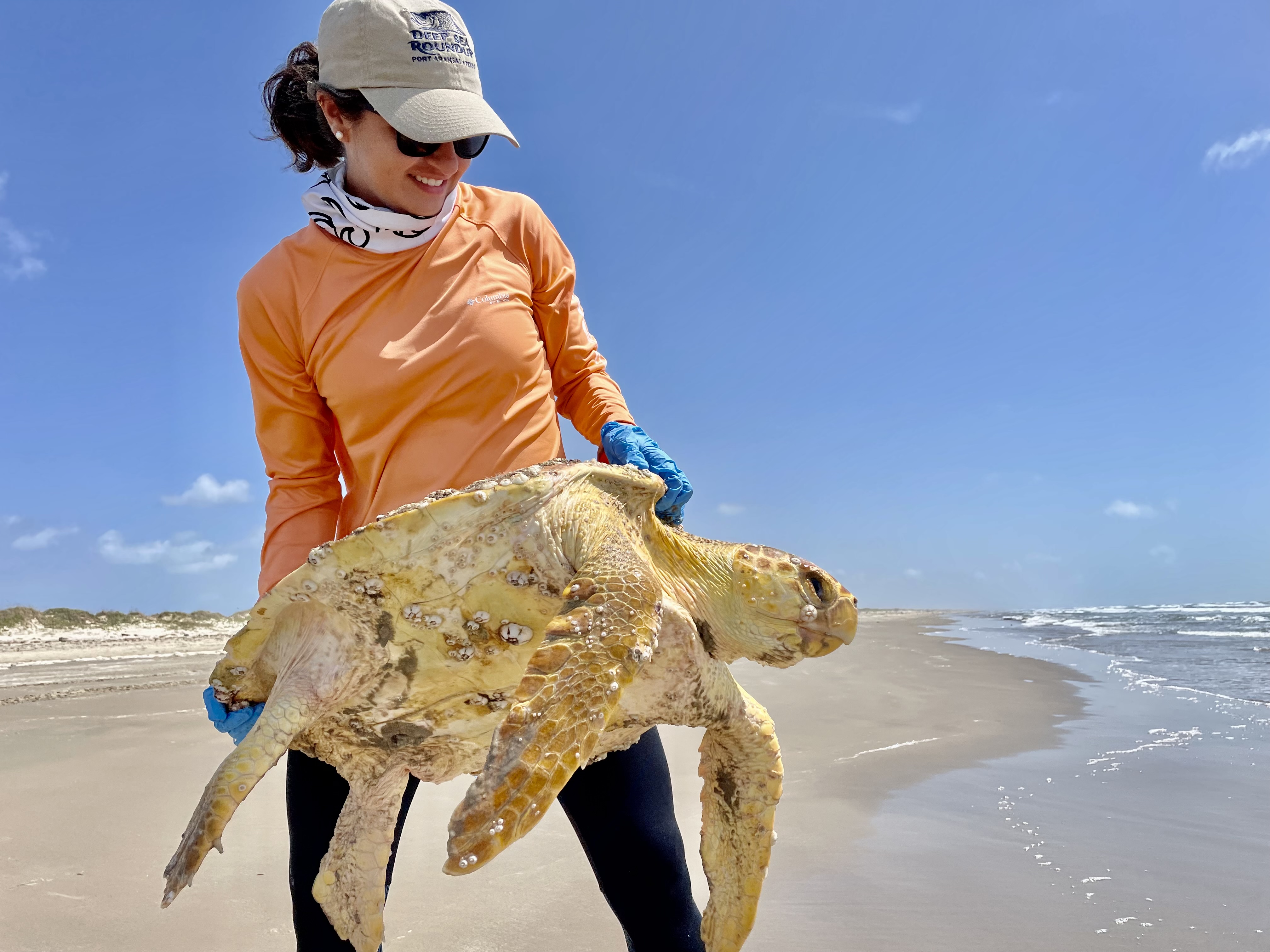Texas Scientists Investigate Record-High Numbers of Stranded Loggerhead Turtles
The Takeaway: The Mission-Aransas Research Reserve joins forces with other scientists aiding loggerhead rescue, rehabilitation, and research into stranding causes.

More than 100 people gathered recently along the Padre Island shore in Texas to witness eight healed and robust sea turtles being released into the waters of the Gulf Coast. The event was a welcome bit of good news during a very challenging time. Over just 11 months, a record 433 loggerhead turtles have been found stranded along the Texas coast—a nearly fourfold increase over the 2012-2021 annual average of loggerhead strandings (109). A team of scientists from the Amos Rehabilitation Keep, Mission-Aransas National Estuarine Research Reserve, and other organizations are working hard to rescue these creatures, nurse them back to health, and solve the mystery of their high stranding rates.
When found, roughly two-thirds of the turtles are dead, and the rest are extremely emaciated.
“The public is our primary way of hearing about stranded sea turtles. Once a citizen contacts us, we have staff and volunteers that go out and rescue the turtles,” says Jace Tunnell, the director of Mission-Aransas Research Reserve. “Back at the Amos Rehabilitation Keep, we assess the animals for injuries, parasites, malnutrition, and other problems. You can think of the rehab facility as an emergency room where animals come in with all kinds of injuries and illnesses to be treated by our veterinarians and staff. We then distribute the sea turtles to other partner facilities to help in the rehab process. It’s a true team effort to save these amazing animals.”
Rehabilitation partners include the Texas State Aquarium and Texas Sealife Center. When capacity is strained, the partners can turn to other facilities, such as SeaWorld San Antonio.
On a hunt for the cause
The scientists have ruled out infectious diseases, biotoxins, and fisheries-related captures as stranding contributors. A change in loggerhead habitat, or access to food sources, could be behind the rise in strandings. The partners collaborated with the U.S. Fish and Wildlife Service to place GPS satellite trackers on six of the released turtles, hoping to glean information on where turtles are traveling, and what they are encountering, that puts them at risk. Before release, staffers make sure the turtles’ bloodwork is healthy and they’ve gained extra weight, to allow time to resume foraging and feeding.
These organizations encourage people who see a stranded turtle to report its location to 866-TURTLE-5, and not to put it back in the water, because it might drown. Instead, stay in the location to help officials find the animal. The Mission-Aransas Research Reserve is managed by the University of Texas Marine Science Institute, which also manages The Amos Rehabilitation Keep. (2022)
Partners: National Park Service’s Padre Island National Seashore, Mission-Aransas Research Reserve, University of Texas Marine Science Institute’s Amos Rehabilitation Keep, U.S. Fish and Wildlife Service, Texas State Aquarium, Texas Sealife Center
PRINT